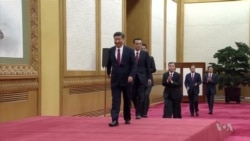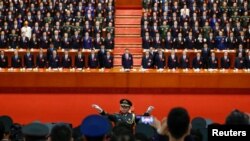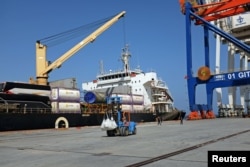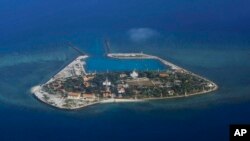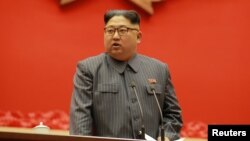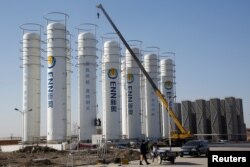In 2017, Chinese President Xi Jinping rose to become the country’s most powerful leader in decades.
And as he shoulders more power and responsibility, analysts say that China is likely to take more risks in 2018 at home and overseas, even as it deals with domestic economic challenges, a nuclear North Korea and the looming threat of trade tensions with the United States.
Seize the day
When China held a once-in-five-year leadership reshuffle in October, Xi not only solidified his role as the authoritarian country’s “core leader” of the Communist Party, but like Mao Zedong, his name and political thought was written into the party’s constitution as well.
Xi was elected to serve a second term in office, and many analysts believe his role as China’s pre-eminent leader could continue for years, if not decades.
As head of the world’s second largest economy, he is leading a push to sell what he calls the China Solution, Beijing’s effort to help solve the world’s financial and political uncertainties.
Analysts see him continuing to seize opportunities overseas as they arise.
“There is a window of opportunity internationally created by the Trump administration, Brexit and a few other things, the Middle East. And despite the risk seen, for example in Pakistan with the building of ports and infrastructure, they have basically doubled down,” said David Kelly, head of research at the Beijing-based group China Policy. “They would argue you have to do this now if you want to do it.”
China’s trillion-dollar strategic and trade program, the Belt and Road Initiative, includes projects like a multibillion-dollar deep sea port in Gwadar, Pakistan, and an economic corridor through that country, which is plagued by terrorist threats.
But there has been push back there against the program in Pakistan, as well as other Chinese policies in the region.
Principled, flexible
In the middle of the year, China got into a border standoff with India, one that it later withdrew from.
It also enacted punishing but unofficial economic sanctions against South Korea following Seoul’s deployment of a U.S.-made missile defense system. That too, was later softened, but there as well, tensions remain.
In the South China Sea, Beijing’s military expansion of man-made islands continues, but China is also showing flexibility as it works on a code of conduct, analysts note.
Yang Kai-huang, a political science professor at Taiwan’s Ming Chuan University, said Beijing’s approach is both principled and flexible.
“Countries including China have to get used to different levels of engagements in many different aspects with the prioritized goal of avoiding major conflicts and wars. I think the world, including China, has come to the common understanding,” Yang said.
Risks squared
North Korea remains a huge uncertainty for China, where it has shown an ability over the past year to take riskier moves, such as adopting tougher sanctions as Pyongyang continues to test the international community. This has meant working closer at times with Washington, even as the threat of a possible trade war with the United States looms overhead.
China Policy’s Kelly says there is much uncertainty. And even more challenging than China’s own fault lines is the Trump administration, he adds.
“If you’ve got risky economics and risky politics then you don’t just have two times the risk, you have the risk squared,” he said.
Risk at home
At home, Xi’s power brings opportunities and risk as well. With his increased power and a general sense that he was successful during his first five years in office, expectations from the public and the risk of failure will be both be higher, Yang said.
“If those in Xi’s leadership team make mistakes or handle issues inappropriately, the public will feel that he has not made good choices and he’ll bear complete responsibility,” Yang said.
A recent uproar over the forced eviction of migrant workers in Beijing and a backlash over a central government plan to force residents in the northeast to shift away from coal in the cold of winter, even before much of the infrastructure was finished, are two recent examples.
During the 19th Party Congress, Xi spoke about waging a battle to bring blue skies to China and tackle the country’s notorious pollution problem. The burning of coal for heat in the winter is seen as a key source of smog.
Analysts said that while cronies of Xi, such as Beijing’s Party Secretary Cai Qi, managed to wiggle out of those challenges largely unscathed, both highlight how the stakes and expectations for China’s powerful leader are higher than ever.
Joyce Huang contributed to this report.




